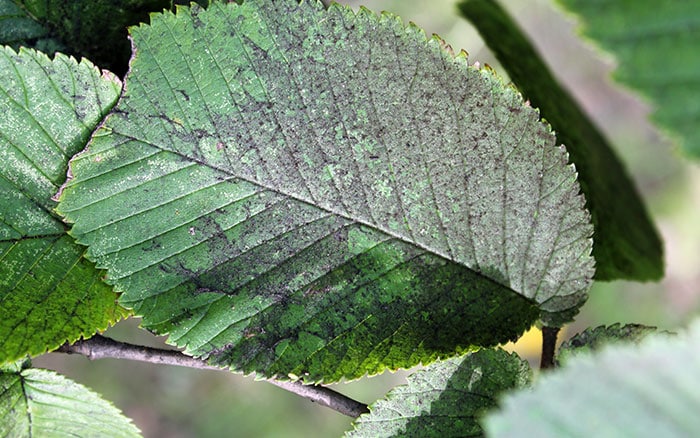Sooty moulds are attracted to, and grow on, sugary substances. They are found on plants being grown under cover as well as in the garden. They are particularly common on plants grown inside a conservatory or greenhouse. Find out more about these fungi in this guide to sooty mould.
What is sooty mould?
Sooty mould is a fungus. There are many different types of this fungus, which all produce a dark, almost black growth. The most common of these fungi are species of Cladosporium.
The fungus is pretty easy to spot. The tell-tale signs are the brown-black covering on and around a sticky goo. This is most likely to be seen on plant leaves.
The mould grows on honeydew that is excreted by other pests like aphids and whiteflies. The honeydew then acts as the site where it grows.
During the summer months you might even find the same symptoms on a garden seat or your car if they’re placed or parked underneath trees infested by aphids.

How to control the mould
The good news is that sooty moulds don’t cause direct damage to a plant. Although, the black coating may block light getting to the leaf surface. In turn, this may then reduce the plant’s ability to properly photosynthesise.
The black growth can be easily washed and wiped off with a damp cloth. But it will reappear if the pest creating the honeydew deposits upon which the sooty mould grows is not dealt with.
Another way to control it is by improving air circulation around the plants and reducing humidity of those being grown in a conservatory or greenhouse. This helps because the fungus loves warm, wet conditions, so decrease the humidity and temperature by improving ventilation.
Due to the honeydew that the sooty mould grows on being excreted by pests such as aphids, companion planting is a way to reduce the likelihood of it growing. Planting nasturtiums will deter aphids from certain plants and act as sacrificial plants. They will also be easier for ladybirds to prey on here.


Leave A Comment